Bishop of Chester
| Bishop of Chester | |
|---|---|
| Bishopric | |
| anglican | |
|
Incumbent: Peter Forster | |
| Province | York |
| Diocese | Chester |
| Cathedral | Chester Cathedral |
| First incumbent | John Bird |
| Formation | 1541 |
The Bishop of Chester is the Ordinary of the Church of England Diocese of Chester in the Province of York.
The diocese expands across most of the historic county boundaries of Cheshire, including the Wirral Peninsula and has its see in the City of Chester where the seat is located at the Cathedral Church of Christ and the Blessed Virgin Mary, which was formerly the Benedictine Abbey of Saint Werburgh, being elevated to cathedral status in 1541. The Bishop's residence is Bishop's House, Chester.
Cheshire has held a bishopric since 1072 when the seat was at the collegiate church of Saint John the Baptist until 1102. The present diocese was formed in 1541 under King Henry VIII. The current incumbent is Peter Forster, the 40th Bishop of Chester, whose election was confirmed in late 1996, and who signs Peter Cestr. At present the Bishop is permitted to sit in the House of Lords as one of the Lords Spiritual.[1]
Earliest times
Chester at various periods in its history had a bishop and a cathedral, though till the early sixteenth century only intermittently. Even before the Norman conquest the title Bishop of Chester is found in documents applied to prelates who would be more correctly described as Bishop of Mercia or even Bishop of Lichfield. After the Council of London in 1075 had decreed the transfer of all episcopal sees to cities, Peter, Bishop of Lichfield, removed his seat from Lichfield to Chester, and became known as Bishop of Chester. There he chose as his cathedral collegiate church of Saint John the Baptist, an arrangement which continued until 1102.
The next bishop, however, transferred the see to Coventry on account of the rich monastery there, though he retained the episcopal palace at Chester. The Diocese of Coventry and Lichfield was of enormous extent, and it was probably found convenient to have something analogous to a cathedral at Chester, even though the cathedral itself was elsewhere; accordingly we find that the church of St John ranked as a cathedral for a considerable time, and had its own dean and chapter of secular canons down to the time of the Reformation. But the chief ecclesiastical foundation in Chester was the Benedictine monastery of St Werburgh, the great church of which finally became the Cathedral Church of Christ and the Blessed Virgin Mary. The site had been occupied even during the Christian period of the Roman occupation by a church dedicated to Ss. Peter and Paul, and rededicated to St Werburgh and St Oswald during the Saxon period. The church was served by a small chapter of secular canons until 1093, when Hugh, Earl of Chester, converted it into a great Benedictine monastery, with the co-operation of St Anselm, then Prior of Bec, who sent Richard, one of his monks, to be the first abbot. A new Norman church was built by him and his successors.
This monastery, though suffering loss of property both by the depredations of the Welsh and the inroads of the sea, prospered, and in the thirteenth, fourteenth, and fifteenth centuries the monks transformed their Norman church into a gothic building.
Tudor period
The last of the abbots of Chester was John, or Thomas, Clark, who resigned his abbey, valued at £1,003 5s. 11d. per annum, to the king at the time of the Dissolution of the Monasteries.
In 1541 Henry VIII, without papal sanction, created six new episcopal sees, one of which was Chester. The archdeaconry of Chester, from the Diocese of Coventry and Lichfield, and that of Richmond, from York, were combined to form the new see, and it was laid down that the abbey church, now the cathedral, was to be served by a dean and six prebends, the former abbot becoming the first dean. At first the diocese was annexed to the Province of Canterbury, but by another Act of Parliament it was soon transferred to that of York. The first bishop was the Provincial of the Carmelites, John Bird, a doctor of divinity who had attracted the king's attention by his sermons preached against the pope's supremacy. Having already been rewarded by appointment as Bishop of Bangor, he was now translated to Chester. On the accession of Mary he was deprived as being a married man, and died as Vicar of Dunmow in 1556.
Despite the origins of the diocese, it was recognised by the Roman See for the space of Queen Mary's reign. George Cotes, Master of Balliol and Fellow of Magdalen College, Oxford, and lecturer in theology, was appointed bishop by the Roman See. In 1556 he was succeeded by Cuthbert Scott, an able theologian and Vice-Chancellor of Cambridge University. On the accession of Elizabeth I he was one of the four Roman Catholic bishops chosen to defend Roman Catholic doctrine at the conference at Westminster, and immediately after this he was sent to the Tower and was deprived in 1559. Being released on bail, he contrived to escape to the Continent. He died at Louvain, on 9 October 1564.
Subsequent centuries
The present diocese covers most of the traditional county of Cheshire, including the Wirral Peninsula and has its see in the City of Chester where the seat is located at the Cathedral Church of Christ and the Blessed Virgin Mary, which was formerly the Benedictine Abbey of Saint Werburgh, being elevated to cathedral status in 1541.
List of bishops
List of bishops of Chester after the foundation of the modern diocese of Chester in 1541. Earlier the midland diocese had for a time had its see at Chester, for which see List of the Bishops of the Diocese of Lichfield and its precursor offices.
| Bishops of Chester | |||
|---|---|---|---|
| From | Until | Incumbent | Notes |
| 1541 | 1554 | |
Translated from Bangor; deprived by Mary I. |
| 1554 | 1555 | |
Died in office. |
| 1556 | 1559 | |
Deprived by Elizabeth I. |
| 1561 | 1577 | |
Died in office. |
| 1579 | 1595 |  William Chaderton William Chaderton |
Translated to Lincoln. |
| 1595 | 1596 | |
Translated from Bangor; died in office. |
| 1597 | 1604 |  Richard Vaughan Richard Vaughan |
Translated from Bangor; translated to London. |
| 1604 | 1615 |  George Lloyd George Lloyd |
Translated from Sodor and Man; died in office. |
| 1616 | 1619 |  Thomas Morton Thomas Morton |
Translated to Lichfield and Coventry then Durham. |
| 1619 | 1646 | 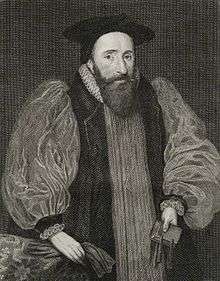 John Bridgeman John Bridgeman |
Deprived of the see when the English episcopy was abolished by Parliament on 9 October 1646. Died in 1652. |
| 1646 | 1660 | The see was abolished during the Commonwealth and the Protectorate.[2][3] | |
| 1660 | 1661 | 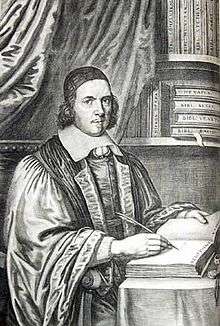 Brian Walton Brian Walton |
Died in office. |
| 1662 | |
Died shortly after consecration. | |
| 1662 | 1668 | |
Also Archdeacon of Canterbury; died in office. |
| 1668 | 1672 |  John Wilkins John Wilkins |
Died in office. |
| 1673 | 1686 |  John Pearson John Pearson |
Died in office. |
| 1686 | 1689 |  Thomas Cartwright Thomas Cartwright |
Died in office. |
| 1689 | 1707 | 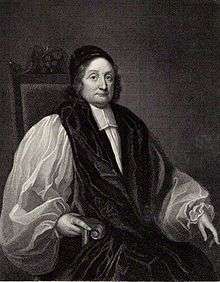 Nicholas Stratford Nicholas Stratford |
Died in office. |
| 1708 | 1714 |  Sir William Dawes, Bt. Sir William Dawes, Bt. |
Translated to York. |
| 1714 | 1725 |  Francis Gastrell Francis Gastrell |
Died in office. |
| 1726 | 1752 |  Samuel Peploe Samuel Peploe |
Died in office. |
| 1752 | 1771 | 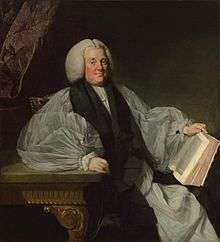 Edmund Keene Edmund Keene |
Translated to Ely. |
| 1771 | 1776 |  William Markham William Markham |
Translated to York. |
| 1776 | 1787 |  Beilby Porteus Beilby Porteus |
Translated to London. |
| 1788 | 1800 |  William Cleaver William Cleaver |
Translated to Bangor then St Asaph. |
| 1800 | 1809 |  Henry Majendie Henry Majendie |
Translated to Bangor. |
| 1810 | 1812 | |
Translated to Ely. |
| 1812 | 1824 |  George Henry Law George Henry Law |
Translated to Bath and Wells. |
| 1824 | 1828 |  Charles James Blomfield Charles James Blomfield |
Translated to London. |
| 1828 | 1848 | 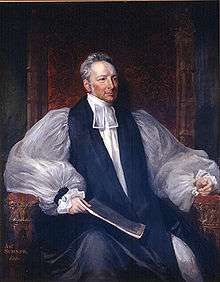 John Bird Sumner John Bird Sumner |
Translated to Canterbury. |
| 1848 | 1865 | |
Died in office. |
| 1865 | 1884 | 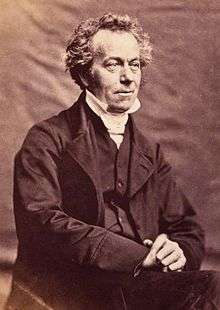 William Jacobson William Jacobson |
Retired. |
| 1884 | 1889 |  William Stubbs William Stubbs |
Translated to Oxford. |
| 1889 | 1919 |  Francis Jayne Francis Jayne |
Retired. |
| 1919 | 1932 | 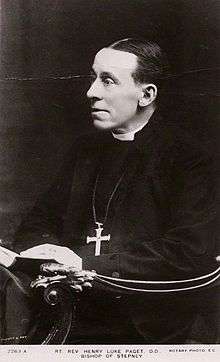 Luke Paget Luke Paget |
Translated from Stepney. |
| 1932 | 1939 |  Geoffrey Fisher Geoffrey Fisher |
Translated to London then Canterbury. |
| 1939 | 1955 | |
Translated from Stafford. |
| 1955 | 1973 | |
Translated from Willesden; translated to London. |
| 1974 | 1981 | |
Translated from Hertford. |
| 1982 | 1996 | |
Retired to London and Southwark; now honorary assistant bishop in Guildford. |
| 1996 | incumbent | |
|
| Sources: [4][5][6] | |||
References
- Notes
- ↑ House of Lords: alphabetical list of Members Archived 2 July 2008 at the Wayback Machine.. Retrieved on 12 December 2008.
- ↑ Episcopy. British Civil Wars, Commonwealth and Protectorate 1638–60. Retrieved on 20 August 2011.
- ↑ King, Peter (July 1968). "The Episcopate during the Civil Wars, 1642–1649". The English Historical Review. Oxford University Press. 83 (328): 523–537. JSTOR 564164. doi:10.1093/ehr/lxxxiii.cccxxviii.523.
- ↑ "Historical successions: Chester". Crockford's Clerical Directory. Retrieved 1 February 2012.
- ↑ Fryde, E. B.; Greenway, D. E.; Porter, S.; Roy, I., eds. (1986). Handbook of British Chronology (3rd, reprinted 2003 ed.). Cambridge: Cambridge University Press. pp. 237–238. ISBN 0-521-56350-X.
- ↑ Horn, J. M.; Smith, D. M.; Mussett, P. (2004). "Bishops of Chester". Fasti Ecclesiae Anglicanae 1541–1857: Volume 11: Carlisle, Chester, Durham, Manchester, Ripon, and Sodor and Man Dioceses. British History Online. pp. 37–42.
- Bibliography
- Haydn's Book of Dignities (1894) Joseph Haydn/Horace Ockerby, reprinted 1969
- Whitaker's Almanack 1883 to 2004, Joseph Whitaker and Sons Ltd/A&C Black, London
- Herbermann, Charles, ed. (1913). "Chester". Catholic Encyclopedia. New York: Robert Appleton.